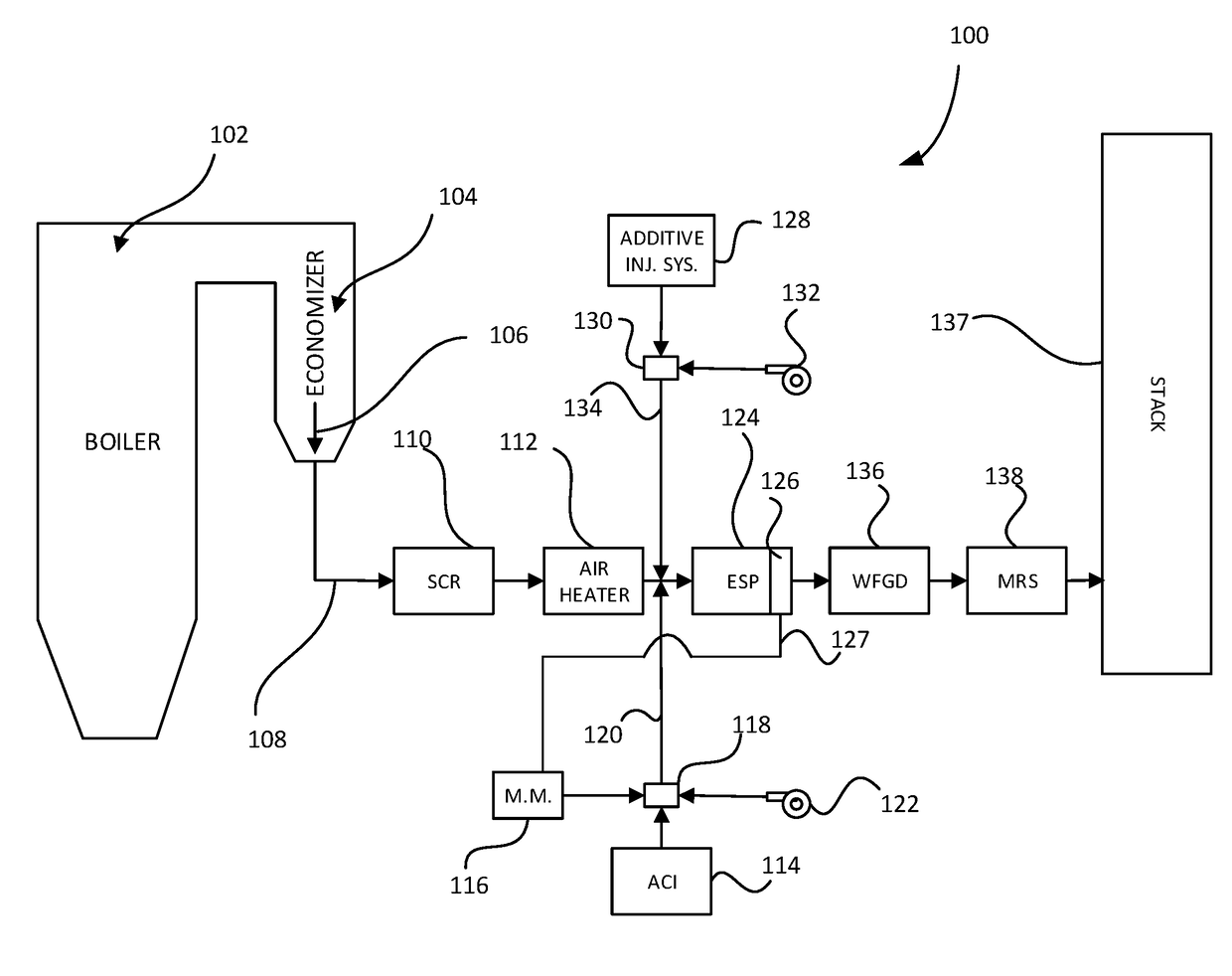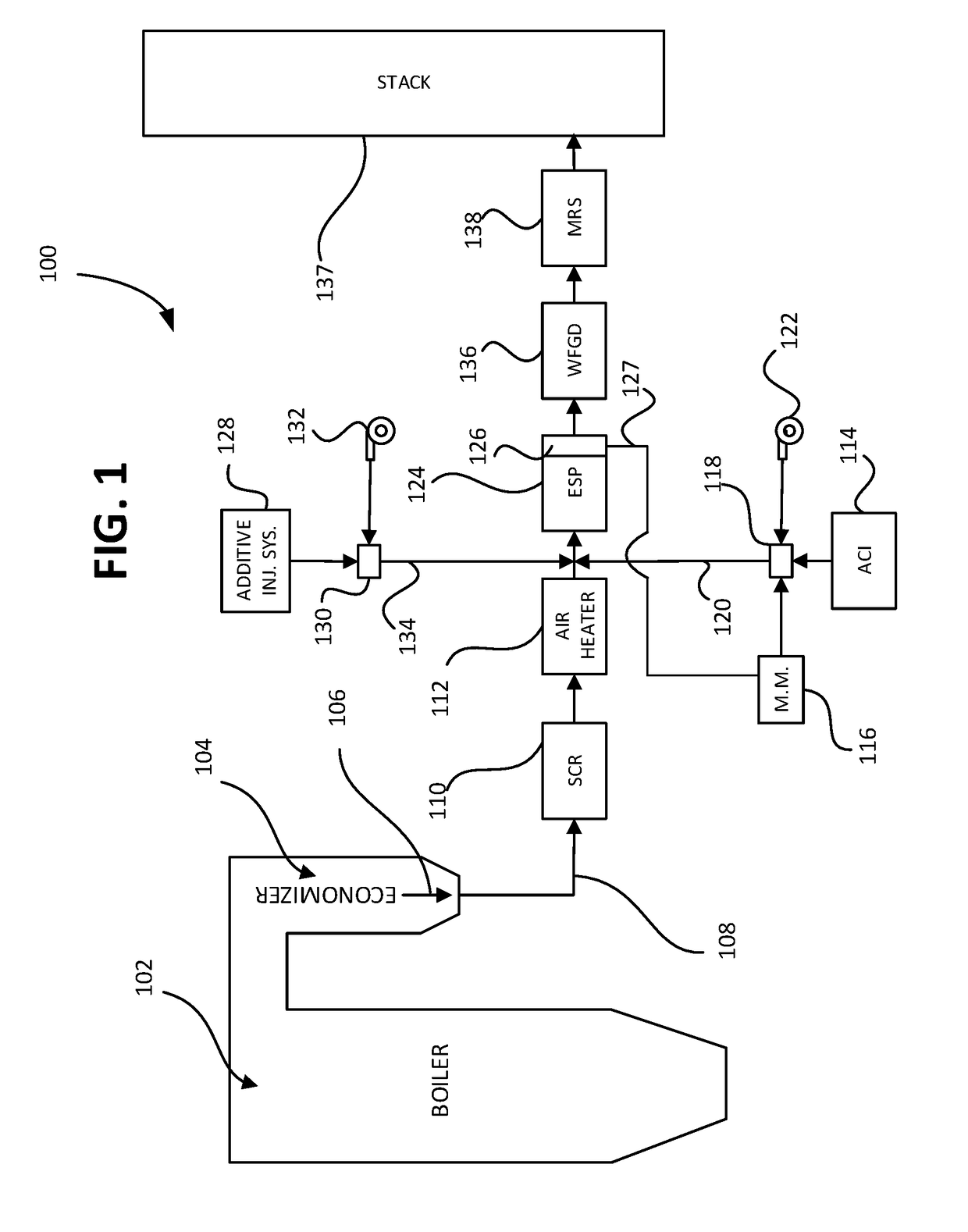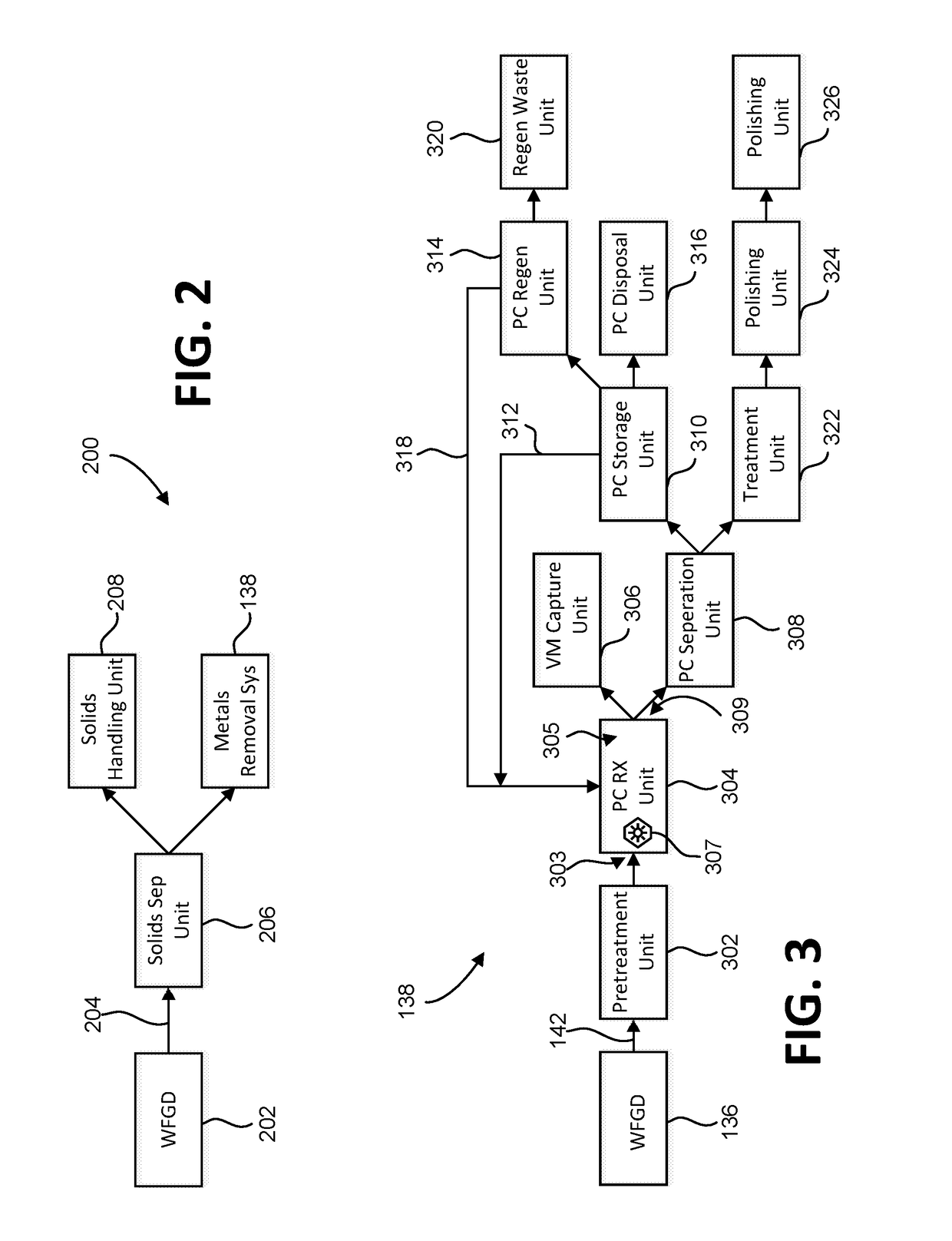System and methods for removing dissolved metals from wastewater streams
a technology of wastewater stream and dissolved metal, which is applied in the direction of water/sewage treatment by oxidation, waste water treatment from gaseous effluent, and treatment water/sewage, etc. it can solve the problems of reducing the oxidation state of dissolved metals, and affecting the recombination of electrons and photocatalysis. , to achieve the effect of reducing the concentration o
- Summary
- Abstract
- Description
- Claims
- Application Information
AI Technical Summary
Benefits of technology
Problems solved by technology
Method used
Image
Examples
example 1
[0076]WFGD wastewater collected from a 348 megawatt (MW) coal-fired power generating station was treated to remove selenium (initial concentration of 0.26 mg / L). The value of treating the wastewater with activated carbon (AC) prior to photocatalytic reduction was evaluated using the following protocols:
[0077]Method 1: (Photocatalysis) 5 grams (g) of TiO2 (Degussa P-25) was magnetically agitated with 100 milliliters (mL) of scrubber wastewater with UV irradiation (254 nm) for 1 hr. The sample was de-oxygenated using 1 gram / liter (g / L) of sodium sulfite.
[0078]Method 2: (Adsorption, Activated Carbon) 100 milligrams (mg) of powdered activated carbon was magnetically agitated with 100 mL of wastewater in the dark for 1 hr. The sample was de-oxygenated using 1 g / L of sodium sulfite.
[0079]Method 3: (Adsorption followed by Photocatalysis) 100 mg of powdered activated carbon was magnetically agitated with 100 mL of wastewater in the dark for 1 hr. Subsequently, the slurry was filtered. The f...
example 2
[0081]Mercury removal from a volume of WFGD blowdown collected from a 348 MW coal-fired power generating station (initial Hg concentration of 40.1 ng / L) was studied using the following protocol (example 1, Method 3): 100 mg of powdered activated carbon was magnetically agitated with 100 mL of wastewater in the dark for 1 hr. Subsequently, the slurry was filtered. The filtrate was then combined with 5 grams of TiO2 (Degussa P-25) and magnetically agitated with UV irradiation (254 nm) for 1 hr. This process removed greater than 99.9% of the mercury, lowering the aqueous concentration to 0.052 ng / L.
example 3
[0082]A WFGD wastewater collected from a surge pond effluent stream of a 2567 MW coal-fired power generating station was treated for selenium removal (initial concentration of 2.42 mg / L). The value of a nitrogen purge to lower the dissolved oxygen content of the wastewater was evaluated using the following protocols:
[0083]Method 1: (No purge) 100 mg of powdered activated carbon was magnetically agitated with 100 mL of wastewater in the dark for 180 sec. Subsequently, the slurry was filtered. The filtrate was then combined with 5 grams of TiO2 (Degussa P-25), magnetically agitated with UV irradiation (254 nm) for 1 hr.
[0084]Method 2: (With N2 purge) 100 mg of powdered activated carbon was magnetically agitated with 100 mL of wastewater in the dark for 180 sec. Subsequently, the slurry was filtered. The filtrate was then combined with 5 grams of TiO2 (Degussa P-25), magnetically agitated with UV irradiation (254 nm) for 1 hr with a constant purge of ultrahigh purity nitrogen (0.1 Lpm)...
PUM
| Property | Measurement | Unit |
|---|---|---|
| wavelength | aaaaa | aaaaa |
| wavelength | aaaaa | aaaaa |
| concentrations | aaaaa | aaaaa |
Abstract
Description
Claims
Application Information
 Login to View More
Login to View More - R&D
- Intellectual Property
- Life Sciences
- Materials
- Tech Scout
- Unparalleled Data Quality
- Higher Quality Content
- 60% Fewer Hallucinations
Browse by: Latest US Patents, China's latest patents, Technical Efficacy Thesaurus, Application Domain, Technology Topic, Popular Technical Reports.
© 2025 PatSnap. All rights reserved.Legal|Privacy policy|Modern Slavery Act Transparency Statement|Sitemap|About US| Contact US: help@patsnap.com



